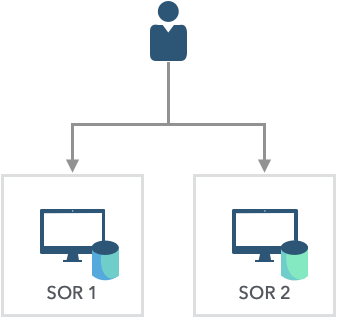Insights
3 Opportunities to Empower Your Mobile Field Services Workforce
For many years, digital innovations across the field services industry were focused on work executed indoors, at a desk and in front of a monitor. Yet, a large percentage of the workforce that actively generates revenue for companies in field services—operators, technicians and inspectors—continue to rely on manual processes such as pen-and-paper, and continue to communicate updates primarily by phone or text message.
Today, smartphones and tablets permeate the industrial workforce, but that alone hasn’t solved the problem of outdated processes and stunted communication. There is an enormous opportunity to load these devices with well-designed solutions that have purpose-built data capture and communication functionality, but that usually isn’t the case today.
Too often, despite having smartphones and tablets, users are forced to open Excel on their small screens, or take photos of paper forms, or call their coworkers for each little status update.
With that in mind, here are 3 ways in which businesses can empower field personnel and increase operational efficiency with mobile technologies:
1. Activate relevant functionality based on proximity to your workers
With location-based data, a user’s mobile device can automatically identify and display only the most relevant information based on where the user is and what equipment is around.
In the oil and gas industry for example, where technicians visit hundreds of wellheads and meters on a daily basis, this functionality reduces the need for manual searches or filtering through numerous pieces of equipment. This technology-supported guidance can also reduce human error involved in looking at the wrong data and making poor decisions, as well as speed up employee training.
2. Capture field data quickly when sensors are not an option
Meter sensors and the Industrial Internet of Things (IIoT) are given a lot of lip service, but it doesn’t always make good business sense to tag every piece of equipment with a sensor. Luckily, there is now a solid alternative to IIoT sensors: OCR scanners, which quickly convert images of text into digital text and data.
So today, users can easily scan meter dials, convert them to text, tag the data with location information and pass all of that detail to the business systems. For instance, utilities personnel can save significant amounts of time by scanning meters to extract alphanumeric data, and report any additional issues like maintenance requests.
Work processes that utilize OCR technology are faster than locating a specific entry section for meter data and typing it in, and less prone to human input error. On top of that, businesses can now get more real-time data about what’s happening in the field with every new entry—rather than looking at daily summaries.
3. Streamline and digitize team workflows
Industrial tasks often involve multiple team members who are scattered across several locations and own only portions of larger workflows. Excessive communication via phone, text messages and emails to coordinate work execution on such tasks, as well as hours spent simply waiting for others to complete their work significantly contribute to a company’s nonproductive time.
Today, ecosystems of digital mobile tools can support workflows of multiple individuals—keeping everyone informed about the status of a task, and showing individualized to-dos. For example, when an engine breaks down due to a valve failure, a technician can submit a part replacement request, which then cues up at the procurement office. Once the part is ordered, another technician in the crew can seamlessly resume the work—anticipating the part’s arrival, tracking its progress through a company’s inspection and supply departments up to delivery at her location.
Unprecedented business insights
In most companies, executives have limited real-time visibility regarding what is happening across the organization at any given time. Planning for work, ordering parts and staffing projects with skilled workers in a timely manner are major areas where real-time data can transform how industrial field service companies operate.
Utilizing current platforms, upgrading or replacing legacy systems, building custom tools and integrating off-the-shelf solutions can all emerge as part of a digital tool portfolio. Empowering the mobile workforce with highly usable and enhanced digital tools is the fastest way to improve business efficiency.



